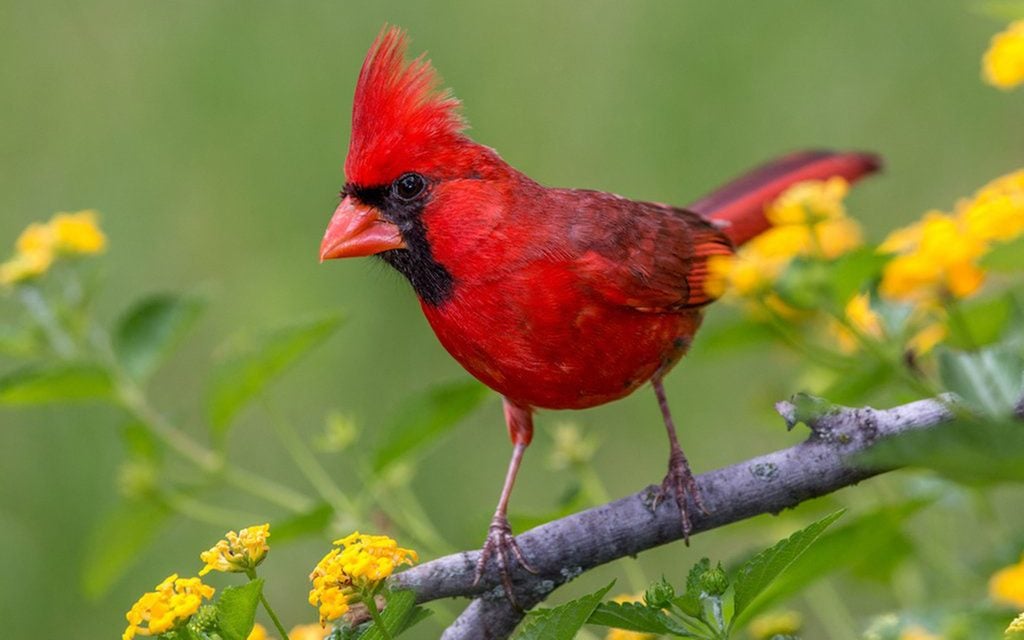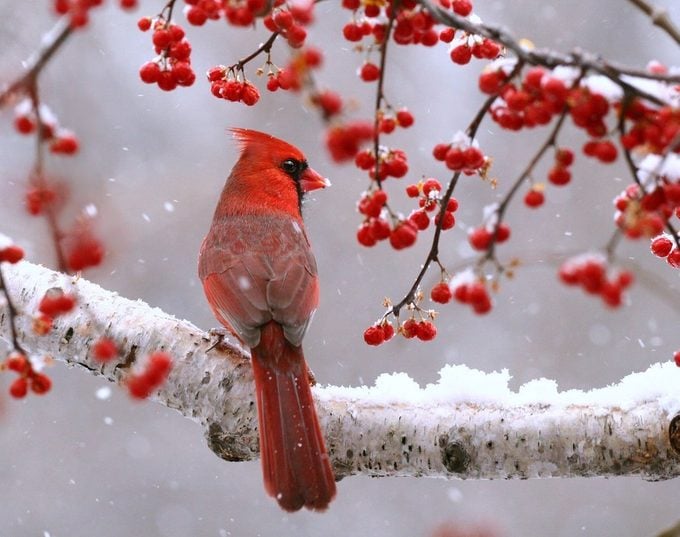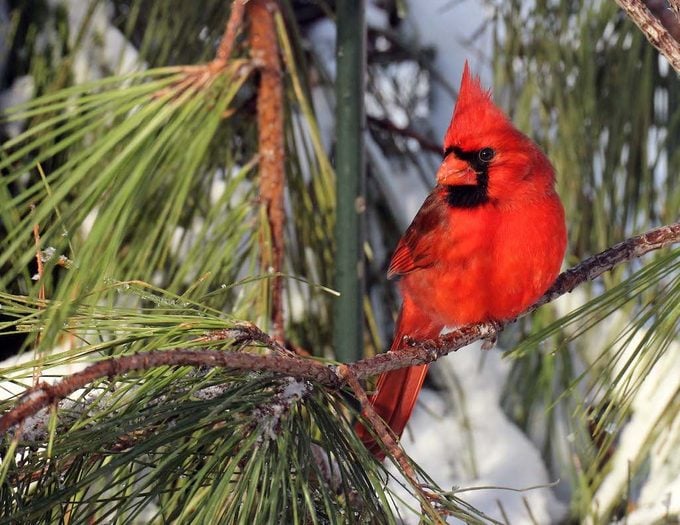6 Proven Ways to Attract Cardinals
Updated: Aug. 27, 2020

Attract more cardinals to your backyard by growing plants with the berries and seeds they love to eat and shrubs to shelter their families.
For a surefire way to attract cardinals, fill a bird feeder with black oil sunflower seeds. But ambitious gardeners shouldn’t stop there, because the right plants bring in these ruby red beauties and other songbirds, too. The key is to focus on the trifecta of providing food, cover and places to raise young, says Gary Ritchison, an ornithologist at Eastern Kentucky University and writer of the wild bird guide Northern Cardinal. A deep dive into the life of these birds unveils clues to help you attract cardinals.
1. Seeds
What do cardinals eat? The shape and structure of a cardinal’s bill reveals the birds’ food preference. The downward curve, typical of seed-eating birds, allows them to crack open or crush seeds. Cardinals also have larger jaw muscles than many other songbirds, which means they can consume bigger seeds. When selecting plants to attract cardinals, look for some with medium-sized seeds as well as a mixture of seasonality. Seed-bearing plants to try include Purple Majesty millet, nasturtium, purple coneflower, safflower, sunflower and sweet pea. Check out the kitchen staples that will help you attract birds.
2. Berries
Although seeds are a favorite food, cardinals also eat a lot of berries. As nonmigratory birds, they seek a variety of foods as availability changes throughout the year. “They’re pretty adaptive,” Gary says. “They have to be, as a resident bird.” But as they consume fruits, studies suggest, cardinals still are after the seeds, often discarding much of the fruit pulp. For that reason, fruits with larger seeds may be more attractive. Look for shrubs with a range of fruiting times and, since cardinals forage low to the ground, dwarf shrubs. To attract cardinals, try dogwood, hackberry, northern bayberry and serviceberry. For humans that love berries, these u-pick farms are must-visits.

3. Red Fruits
The vivid crimson color of male cardinals comes from carotenoid pigments, which are found in red fruits. Eating more of these scarlet-hued snacks, especially during molt, helps a male form brighter red feathers. The flashy color boosts his ability to successfully attract mates and defend a pair’s nesting territory. Red-fruited plants to try include hawthorn, raspberry, sumac and winterberry. Here are some more ways to put raspberries to work.
4. Cover Plants
For cardinal nests, concealment is key: The showy birds look for the camouflage of dense shrubs and trees. Compared to other birds, their nests are low, only 4 to 8 feet off the ground. Cardinals are territorial during breeding and the male stays near the nest. To see cardinals year-round in your yard, host a nesting pair. For their first nests in April or May, cardinals often choose the protection of evergreens. Pairs raise several broods a year and select different sites, so planting a mix of small, dense trees and shrubs is ideal. Some cover trees and plants to try are box elder, eastern red cedar, nannyberry and roses. Wild grapevine is a good addition, too, because cardinals use its bark for nesting material.

5. Caterpillars
Cardinal parents feed their young almost exclusively with insects, which provide the protein that nestlings need to grow muscle. When very young, the babies eat soft-bodied insects such as caterpillars. Planting additional beds of butterfly host plants is a good way to help the weary parents. For much of the year, 75 percent of the food that cardinals eat is plant material, but at the height of summer breeding season, the majority of their diet is insects. To attract cardinals, your garden should include host plants such as dill, fennel, hollyhock, mustard greens and snapdragon.
6. Evergreens
Though cardinals forage on open ground, the birds need a place to retreat quickly to safety. In summer, cardinals use the same shrubs that provide nesting sites, but in winter, they escape to evergreens. During cold weather, cardinals form flocks that move around in search of food. Yards that offer plentiful food and cover have the best chance of creating that picture-perfect vision of red cardinals dotting a snow-covered evergreen. Try arborvitae, juniper and spruce. Next, read up on how to attract hummingbirds.